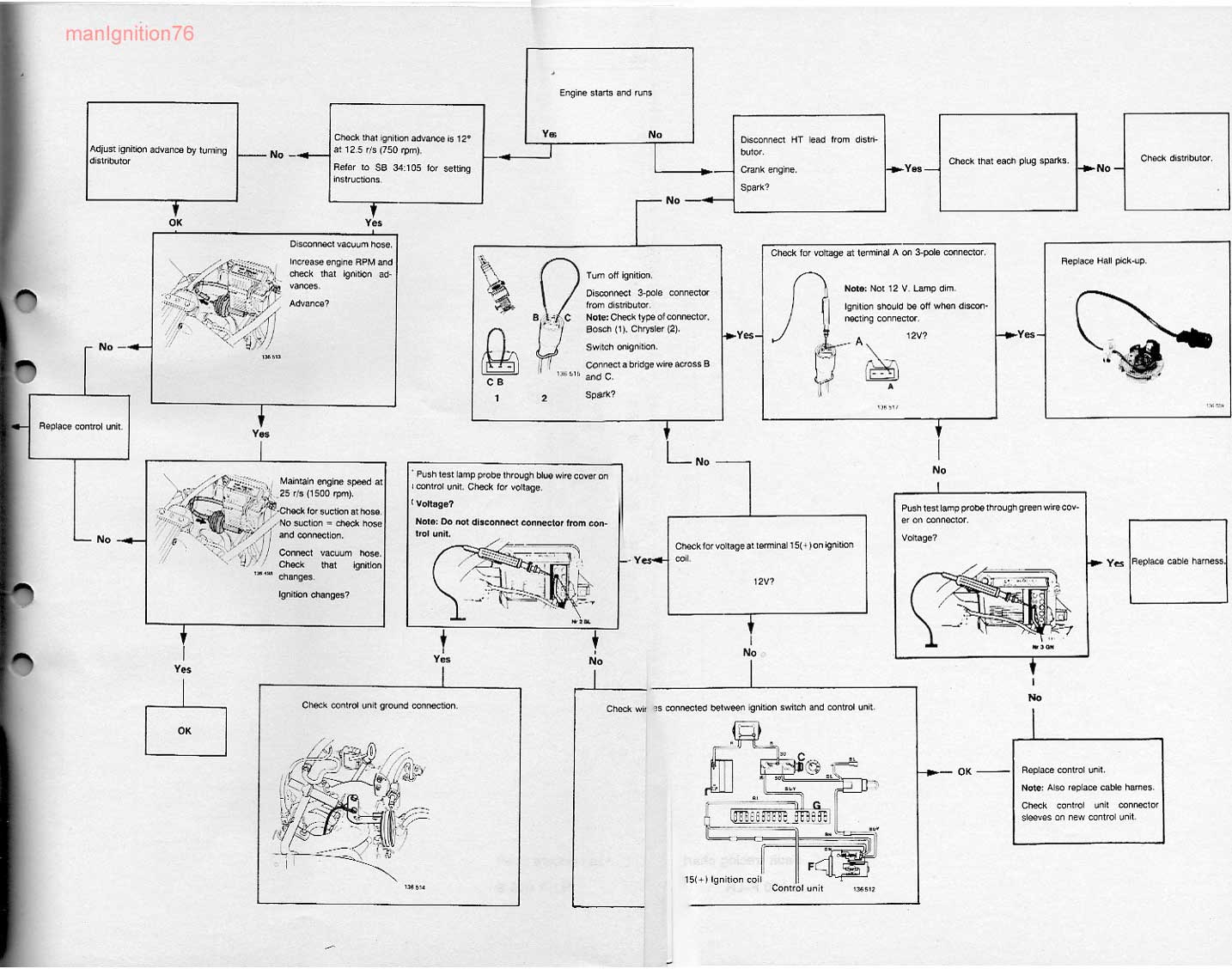|
What bothers me about this thread is a perceived misunderstanding of terms.
In 1982 there were two ignition systems in production for US market 240 Volvos.
In the turbo model, a Bosch "Breakerless" ignition system made use of a distributor with a reluctor and coil with a two-wire circuit to a Bosch transistorized ignition amplifier. The connectors were reliable.
In the non-turbo model, a Volvo/Chrysler "Computerized" system used a distributor with a Hall-effect switch connected to the Chrysler-supplied ignition computer with a three-wire cable. The connectors initially had a compatibility problem between the pins on the harness and the computer unit.
Volvo came out with sleeves to correct the contact force on the three-wire circuit for the Hall-effect switch, which was especially sensitive to contact resistance. They also had grease in the computer connector to preclude moisture, which made the pins look ugly when a mechanic would look at them.
The most confusing issue seems to be the original 1982-83 dizzy was a white cap Chrysler-supplied unit, later retrofit and replaced by a red cap Bosch dizzy. The electrics are the same from one to the other, but the Bosch unit is the desirable distributor.
To add to this confusion is what Volvo did with its slightly later release in the 7-series cars, using a Bosch computer (mounted inside the car thank you) with that same Bosch Hall-effect dizzy. Some serious enthusiasts wanting to get rid of the Chrysler system have heavily modified their 240's to get this "EZK" ignition from a 7-series Volvo, because it includes some diagnostic capabilities.
I hope this helps you with identifying what you have and what you feel you should do about it.
--
Art Benstein near Baltimore
By all means, marry. If you get a good wife, you'll become happy; if you get a bad one, you'll become a philosopher. - Socrates
|


